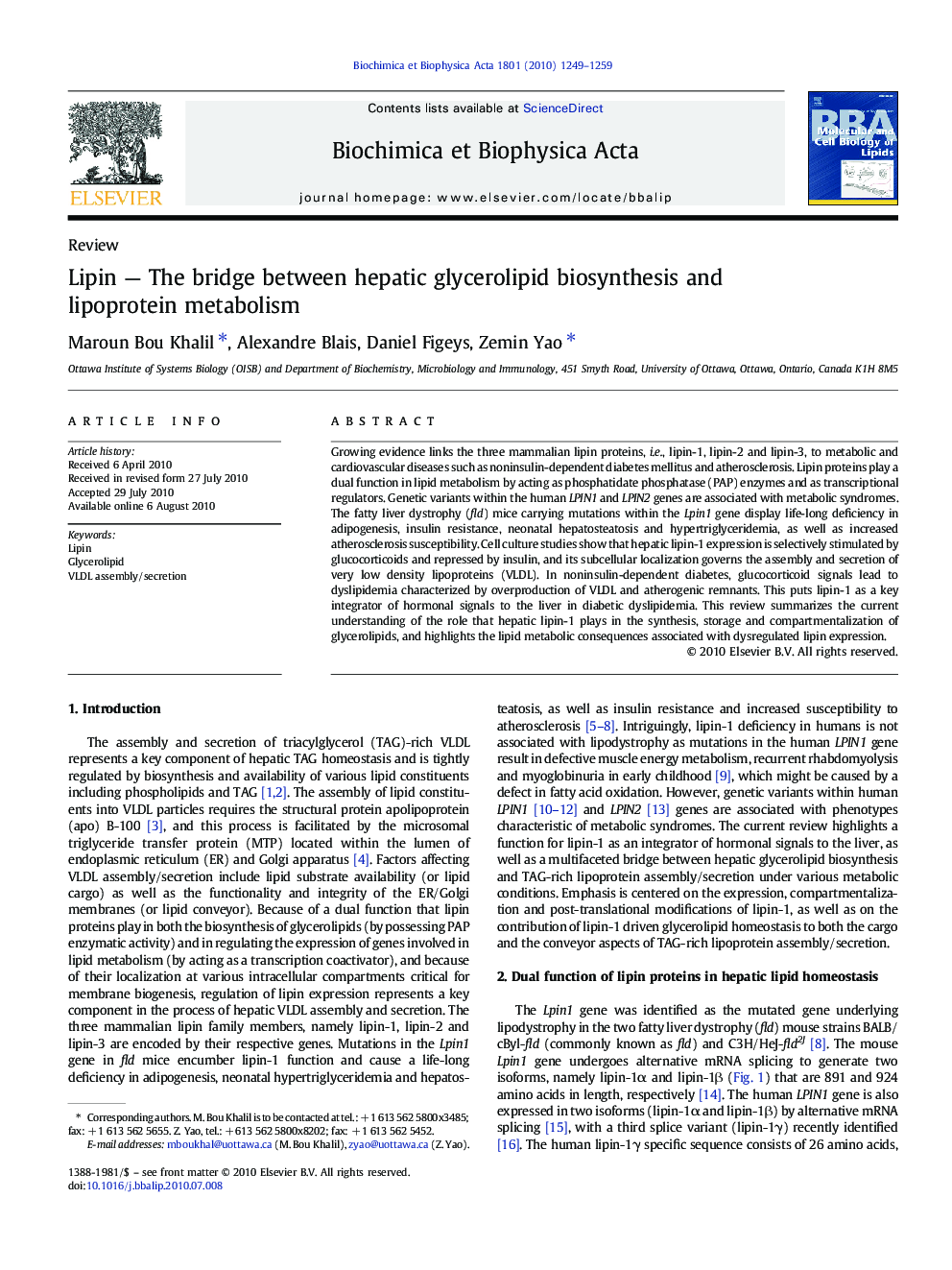| کد مقاله | کد نشریه | سال انتشار | مقاله انگلیسی | نسخه تمام متن |
|---|---|---|---|---|
| 1949633 | 1537770 | 2010 | 11 صفحه PDF | دانلود رایگان |

Growing evidence links the three mammalian lipin proteins, i.e., lipin-1, lipin-2 and lipin-3, to metabolic and cardiovascular diseases such as noninsulin-dependent diabetes mellitus and atherosclerosis. Lipin proteins play a dual function in lipid metabolism by acting as phosphatidate phosphatase (PAP) enzymes and as transcriptional regulators. Genetic variants within the human LPIN1 and LPIN2 genes are associated with metabolic syndromes. The fatty liver dystrophy (fld) mice carrying mutations within the Lpin1 gene display life-long deficiency in adipogenesis, insulin resistance, neonatal hepatosteatosis and hypertriglyceridemia, as well as increased atherosclerosis susceptibility. Cell culture studies show that hepatic lipin-1 expression is selectively stimulated by glucocorticoids and repressed by insulin, and its subcellular localization governs the assembly and secretion of very low density lipoproteins (VLDL). In noninsulin-dependent diabetes, glucocorticoid signals lead to dyslipidemia characterized by overproduction of VLDL and atherogenic remnants. This puts lipin-1 as a key integrator of hormonal signals to the liver in diabetic dyslipidemia. This review summarizes the current understanding of the role that hepatic lipin-1 plays in the synthesis, storage and compartmentalization of glycerolipids, and highlights the lipid metabolic consequences associated with dysregulated lipin expression.
Research Highlights
► Growing evidence links the three mammalian lipin proteins, i.e., lipin-1, lipin-2 and lipin-3, to metabolic and cardiovascular diseases such as noninsulin-dependent diabetes mellitus and atherosclerosis. Lipin proteins play a dual function in lipid metabolism by acting as phosphatidate phosphatase (PAP) enzymes and as transcriptional regulators. Genetic variants within the human LPIN1 and LPIN2 genes are associated with metabolic syndromes. The fatty liver dystrophy (fld) mice carrying mutations within the Lpin1 gene display life-long deficiency in adipogenesis, insulin resistance, neonatal hepatosteatosis and hypertriglyceridemia, as well as increased atherosclerosis susceptibility. Cell culture studies show that hepatic lipin-1 expression is selectively stimulated by glucocorticoids and repressed by insulin, and its subcellular localization governs the assembly and secretion of very low density lipoproteins (VLDL). In noninsulin-dependent diabetes, glucocorticoid signals lead to dyslipidemia characterized by overproduction of VLDL and atherogenic remnants. This puts lipin-1 as a key integrator of hormonal signals to the liver in diabetic dyslipidemia. This review summarizes the current understanding of the role that hepatic lipin-1 plays in the synthesis, storage and compartmentalization of glycerolipids, and highlights the lipid metabolic consequences associated with dysregulated lipin expression.
Journal: Biochimica et Biophysica Acta (BBA) - Molecular and Cell Biology of Lipids - Volume 1801, Issue 12, December 2010, Pages 1249–1259